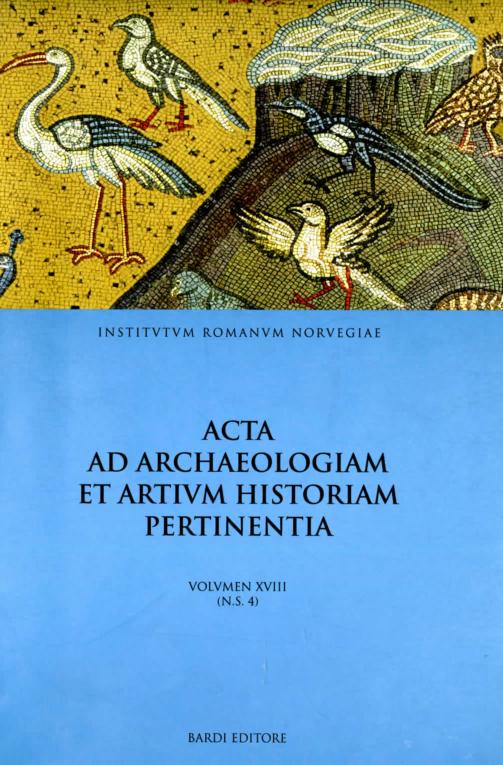Santa Costanza at Rome and the House of Constantine
DOI:
https://doi.org/10.5617/acta.5708Sammendrag
This paper investigates the written documentary sources concerning the patronage or matronage of the exedra basilica associated with Saint Agnes on the Via Nomentana in Rome, next to which the present church of Santa Costanza was erected. The written sources suggest two possible women as the matrons of the basilica, both said to be daughters of the emperor Constantine the Great: Constantia and Constantina. The first tradition was established by an entry in the life of Bishop Sylvester in the Liber Pontificalis, the second by both Ammianus Marcellinus and an acrostic poem connected with the basilica. These documents are examined for their authenticity and historical veracity. This examination leads to a survey of imperial matronage in the fourth century, and while it is argued that the most likely matron of the women is Constantina, who married Gallus Caesar in 351, neither of these ladies can be shown to have erected the present Santa Costanza. Rather, construction of the latter, it will be posited, was most likely ordered by the emperor Constantius II (337-361), the brother of Constantina, to serve as an imperial dynastic mausoleum.
Hvordan referere
Utgave
Seksjon
Lisens

This work is licensed under a Creative Commons Attribution-NonCommercial 4.0 International License.
Authors who publish with this journal agree to the following terms:
- Authors retain copyright and grant the journal right of first publication with the work simultaneously licensed under a Creative Commons Attribution License that allows others to share the work with an acknowledgment of the work's authorship and initial publication in this journal.
- Authors are able to enter into separate, additional contractual arrangements for the non-exclusive distribution of the journal's published version of the work (e.g., post it to an institutional repository or publish it in a book), with an acknowledgement of its initial publication in this journal.
- Authors are permitted and encouraged to post their work online (e.g., in institutional repositories or on their website) prior to and during the submission process, as it can lead to productive exchanges, as well as earlier and greater citation of published work (See The Effect of Open Access).





